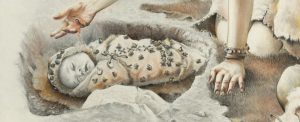Typically, an archaeologist’s job is to uncover the narratives of past civilizations through the items they left behind to gather a better glimpse of our past and how various cultures lived. Recently, however, humans have ventured beyond Earth to other places like the Moon and Mars, so how does this change the meaning of archaeology? To help answer this question, the term “space archaeology” was coined to describe human activity in space, or human activity with the goal of exploring space (Woodall, 2022). Furthermore, to investigate space archeology, archaeologists have looked to the International Space Station (ISS). This is one of the first experiments where archaeological research focused on a society that exists in the present, rather than the past.
In particular, researchers led by archaeologists Alice Gorman (author of Dr. Space Junk vs the Universe) and Justin Walsh have begun to explore the “unique micro-society in a mini world” by examining the culture of living on the ISS (“Boldly Going”, 2022). These researchers studied a grid comprised of photographs taken by crew members, hoping to address several overarching questions that have not previously been inquired by other earthbound archaeologists. These questions include how crew members interact with one another as well as the equipment and limited space, how space artifacts reflect culture through hierarchical lenses, how crew members altered the station to suit their needs, and what is the effect of microgravity on this miniature society (Romo, 2022). The ISS is the next step in investigating the development of humanity living in space.
An additional reason this research is occurring is because the ISS will intentionally fall to Earth in January 2031 (Strickland, 2022). Therefore, it is highly important to research this aspect of human culture before it is too late.
Moreover, Walsh remarks, “If this were a site on Earth, we would do everything we could to preserve it. But that isn’t technically feasible, so the next thing archaeologists do, like when sites are going to be [destroyed], is document everything we can about the site, and preserve that documentation and any samples” (Strickland, 2022).
The International Space Station Archaeological Project (ISSAP) is the first large-scale space archaeology project. The first phase of the experiment lasted 60 days from January to March 2022, and updates are currently posted on the ISSAP’s website (“Boldly Going”, 2022). These updates included photos of artifacts, explanations of technology used by the archaeologists, and analyses of assemblages of items. Now that Phase One is complete, what will Phase Two look like? Is this the future of archaeology?
Reference List:
“Boldly Going Where No Archaeologists Have Gone Before.” ISS Archaeology, April 12, 2022. https://issarchaeology.org/.
Romo, Vanessa. “Archaeologists Launch First-Ever ‘Dig’ into Life on the International Space Station.” NPR. NPR, January 20, 2022. https://www.npr.org/2022/01/20/1074216381/archeologists-launch-first-ever-dig-into-life-on-the-international-space-station.
Strickland, Ashley. “Capturing the Heritage of the International Space Station before It Crashes into the Ocean.” CNN. Cable News Network, March 11, 2022. https://www.cnn.com/2022/03/11/world/space-station-archaeology-cultural-heritage-scn/index.html.
Woodall, Tatyana. “What an Extraterrestrial Archaeological Dig Could Tell Us about Space Culture.” Popular Science, March 29, 2022. https://www.popsci.com/space/archaeology-international-space-station/.
Further Reading:
Ali, Rao Hamza, Amir Kanan Kashefi, Alice C. Gorman, Justin St. P. Walsh, and Erik J. Linstead. “Automated Identification of Astronauts on Board the International Space Station: A Case Study in Space Archaeology.” Acta Astronautica. Pergamon, August 12, 2022. https://www.sciencedirect.com/science/article/pii/S0094576522004210.
Metzger, Cerise Valenzuela, Cerise Valenzuela Metzger View all posts, and View all posts. “Chapman University’s Study Aboard the International Space Station Wins a Prestigious Digital Archaeology Award.” Chapman Newsroom, November 18, 2022. https://news.chapman.edu/2022/11/14/chapman-universitys-study-aboard-the-international-space-station-wins-a-prestigious-digital-archaeology-award/.




